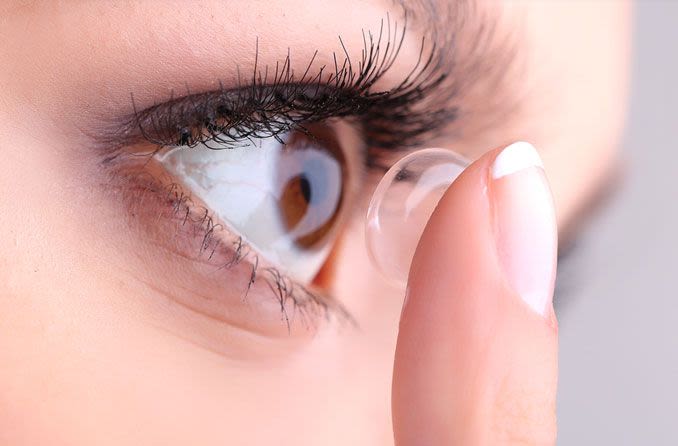If you have an eye prescription, it can often be difficult to understand how your vision is affected by the different numbers and letters written on your prescription. How does it let you know what glasses to get? Luckily, reading your eye prescription is fairly simple if you know what to look for.

Reading Your Eye Prescription
As you read through your prescription, pay close attention to any numbers that are preceded by a “+” or “-” sign. These indicate how strong your glasses will need to be in order to correct your vision. For example, if your prescription says “-2.50”, that means you’ll likely need a pretty strong pair of glasses to see properly.
There are also a few other important things to keep in mind when reading your eye prescription. The “OD” and “OS” abbreviations refer to your right and left eye, respectively. The “sphere” measurement indicates how much correction you need for nearsightedness or farsightedness.
The “cylinder” measurement indicates how much correction you need for astigmatism, which is a condition that causes blurred vision. Finally, the “axis” measurement tells you where the cylindrical power is placed in your eye and how it should be aligned with your glasses.
Now that you know how to read your eye prescription, you can be confident that you have the right glasses for your vision needs. Whether you need to read up close or far away, there’s a pair of glasses out there that will help you see clearly and comfortably.

Eye Prescription Abbreviations
At the doctor’s office, you may receive an eye prescription that includes a long list of numbers and letters. But how do you actually read this prescription, and what do all these abbreviations mean?
To begin, the first part of your eye prescription will include your pupillary distance (PD), or how far apart your two eyes are from each other. This is measured in millimeters and is typically written as a single number followed by a decimal point.
Next, you’ll see several different types of abbreviations that refer to specific measurements for your lenses: Sphere (SPH) refers to how strong or weak your lenses need to be to correct nearsightedness or farsightedness; Cylinder (CYL) indicates how much astigmatism is present in your eye, and Axis refers to the angle of your astigmatism.
All of these numbers will be followed by a plus or minus sign. A plus sign (+) means you are farsighted, while a minus sign (-) means you are nearsighted. The further away from zero, the number is, the stronger your prescription will be. For example, +3.50 SPH would be a stronger prescription than +2.00 SPH.
Finally, you may see an abbreviation for Add, which refers to reading glasses or bifocals that may be needed in addition to your contact lenses or eyeglasses prescription. Here’s a list of abbreviations and what they mean:
O.D.- Right eye
O.S.- Left eye
O.U.- Both Eyes
SPH- Short for Sphere, which tells you how powerful the prescription is
CYL- Short for Cylinder, If this is on your prescription it indicates astigmatism. This condition is a result of an irregular-shaped cornea and can cause blurred or distorted vision.
AXIS- Describes the direction and degree of your astigmatism.
ADD- The lower part of a multi-focal lens is where you need an extra boost in magnification. It’s used to correct presbyopia.
Will Your Eye Prescription Change?
It is very common for people’s vision to change over time, especially as they age. This means that the prescription you have today may not be the same as what you will need in the future.
That being said, there are a few things that can affect how your eye prescription changes over time. First, if you are nearsighted, it is common for your vision to slowly get worse over time. This is because the eyeball continues to grow longer, which causes light to focus in front of the retina instead of directly on it.
On the other hand, if you are farsighted, your vision may actually improve as you age. This is because the eyeball may shrink slightly and become less curved, making it easier for light to focus directly on the retina.
If you are concerned about how your vision might change over time, it is a good idea to talk to your eye doctor about what you can expect.

Contact Lens Prescription
When you get a new pair of contact lenses, it is important to understand how to read your prescription properly. This will help you ensure that you are getting the correct type and strength of contacts for your needs. Contact lens prescriptions are different from your eyeglass prescription.
The power of your lenses may be indicated using a plus or minus sign, or it may be listed as a number without any symbols. The power of your lenses will determine how well you can see with them. If you have a higher number, this means that you will need stronger lenses to see properly.
The next thing to look at is the base curve. This is the measurement of the curve on the back surface of your contact lenses, and it will impact how comfortable they feel in your eyes. If you have a low number, this means that your lenses will be flatter and more rigid, while higher numbers indicate a lens with a greater curve.
